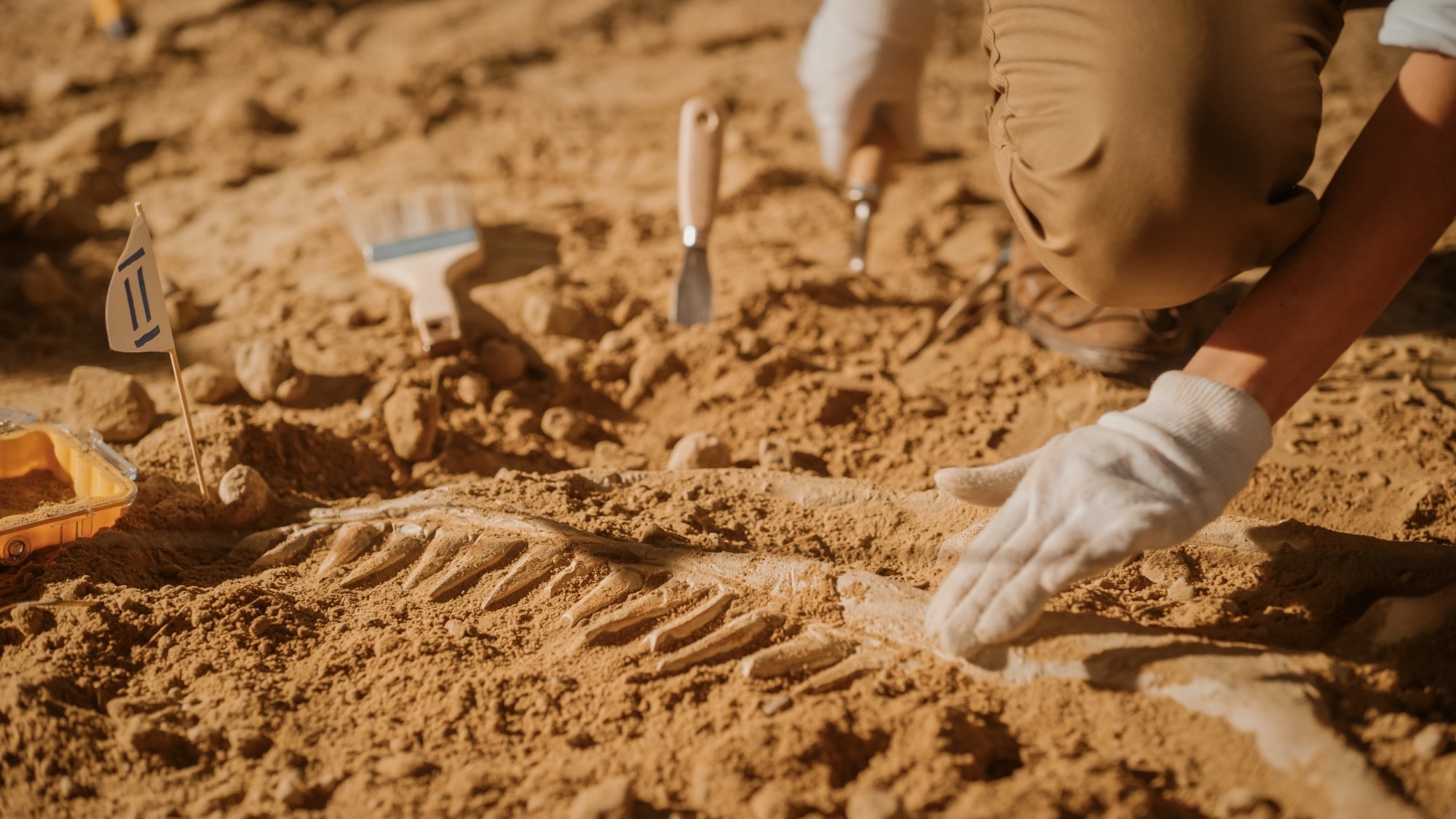When you hear the word fossil, you probably think of bones or teeth—remnants of long-extinct creatures. But what if fossils could also tell us about disease?
Researchers are now looking beyond hard tissues to study fossilized proteins—molecular fragments that can survive for millions of years. Through a growing field called paleoproteomics, scientists are uncovering how conditions like cancer may have evolved, and how ancient species coped with disease.
These discoveries aren’t just about the past. They’re starting to inform how we think about vulnerability, resistance, and even potential disease suppression mechanisms in modern medicine.
 Image Credit: Gorodenkoff/Shutterstock.com
Image Credit: Gorodenkoff/Shutterstock.com
The Rise of Paleoproteomics
When studying ancient biology, Deoxyribonucleic acid (DNA) often degrades too quickly to recover useful information. Proteins, however, are more stable and can survive for millions of years in mineralized tissues like bone and dentin. Their preservation depends on environmental factors such as temperature, pH, and moisture levels, as well as careful handling during excavation and storage.
That’s the basis of paleoproteomics, a growing field that uses advanced tools like high-resolution mass spectrometry, scanning electron microscopy, and Time-of-Flight Secondary Ion Mass Spectrometry to detect and analyze fossilized proteins. Researchers have identified proteins such as collagen and osteocalcin, as well as traces of pigments and blood-derived molecules.
With these tools, scientists can reconstruct disease pathways and investigate how evolutionary trade-offs shaped immune function in extinct species. When combined with traditional fossil analysis, paleoproteomics is helping researchers understand not only how diseases evolved, but also how some species may have developed ways to resist them.1-3
Ancient Tumors and What They Tell Us About Disease Today
Did dinosaurs get cancer? Paleoproteomic research suggests they did, and that cancer may have been more common in ancient species than once assumed.
One striking example comes from Telmatosaurus transsylvanicus, a hadrosaur species with a benign odontogenic tumor in its jaw. Inside the lesion, researchers identified erythrocyte-like structures—evidence of preserved soft tissue. Other advanced imaging and molecular analyses have revealed tumors such as hemangiomas and osteoblastomas, and possible metastatic lesions in the vertebrae of species like Edmontosaurus.
Dinosaur diagnosed with advanced cancer for first time
These discoveries challenge earlier assumptions that cancer was rare in prehistoric life and instead suggest that it was a persistent biological condition throughout evolutionary history.2
This raises another question: how did large-bodied animals like dinosaurs manage cancer risk over long lifespans? Today, animals such as elephants and whales appear to have evolved genetic mechanisms to help suppress tumors. Elephants, for example, carry multiple copies of the tumor-suppressor gene TP53, enhancing their ability to repair damaged DNA. Bowhead whales show unusually efficient DNA repair systems.
These insights also tie into broader questions in evolutionary biology. Life-history theory describes how organisms allocate energy between growth, reproduction, and survival, often at the expense of one another. For large, long-lived species like dinosaurs, investing in cancer suppression may have been a necessary trade-off for extended lifespans. Fossilized tumors found in hadrosaurs suggest that these animals were not immune to cancer, but may have evolved mechanisms to delay its effects or reduce its impact.
Paleoproteomics could help determine whether extinct species evolved tumor-suppressor mechanisms similar to those in living animals, or developed entirely different strategies to manage cancer susceptibility.2
For example, examining molecular markers related to tumor pathways, such as the mitogen-activated protein kinase (MAPK) pathway, may reveal whether mutations like B-Raf proto-oncogene V600E (BRAF V600E), found in present-day ameloblastomas, also occurred in extinct species.2,3
Challenges in Studying Fossilized Proteins, and What’s Changing
Recovering proteins from fossils is no simple task. Fossilized proteins are often present in low concentrations and may be chemically altered through diagenesis (long-term changes caused by environmental conditions such as temperature, pH, and microbial activity).
These alterations make proteins harder to detect and can mimic or obscure authentic molecular signatures. Contamination from modern proteins adds another layer of difficulty, requiring rigorous protocols for sample handling and analysis.1
Despite these challenges, advances in analytical techniques are pushing the field forward. High-resolution tandem mass spectrometry (LC-MS/MS) has significantly improved sensitivity and specificity, allowing researchers to detect and sequence peptides from samples that were previously considered too degraded.
Peptide mass fingerprinting using matrix-assisted laser desorption/ionization time-of-flight (MALDI-TOF) has become a valuable method for identifying conserved markers like collagen with speed and precision.
Emerging approaches, including data-independent acquisition and digestion-free workflows, are further expanding the range of detectable proteins while improving reproducibility and reducing sample loss. These tools are enabling scientists to probe deeper into the fossil proteome, including less-studied or poorly conserved proteins, sometimes referred to as the “dark proteome.”1
The next step, though, isn’t just about refining lab techniques. It’s about building stronger bridges between disciplines: paleontology, molecular biology, and clinical research. If scientists can integrate these fields, fossilized proteins could help uncover disease pathways we haven’t yet considered, and perhaps even inform new ways to treat or prevent illness in the future.1,2
References and Further Reading
- Warinner, C., Korzow Richter, K., Collins, M. J. (2022). Paleoproteomics. Chemical reviews, 122(16), 13401-13446.
- Chandrasinghe, P. C., Cereser, B., Bertazzo, S., Csiki-Sava, Z., Stebbing, J. (2025). Preserving Fossilized Soft Tissues: Advancing Proteomics and Unveiling the Evolutionary History of Cancer in Dinosaurs. Biology, 14(4), 370.
- Hunt, K. J., Roberts, C., Kirkpatrick, C. (2018). Taking stock: A systematic review of archaeological evidence of cancers in human and early hominin remains. International Journal of Paleopathology, 21, 12-26.